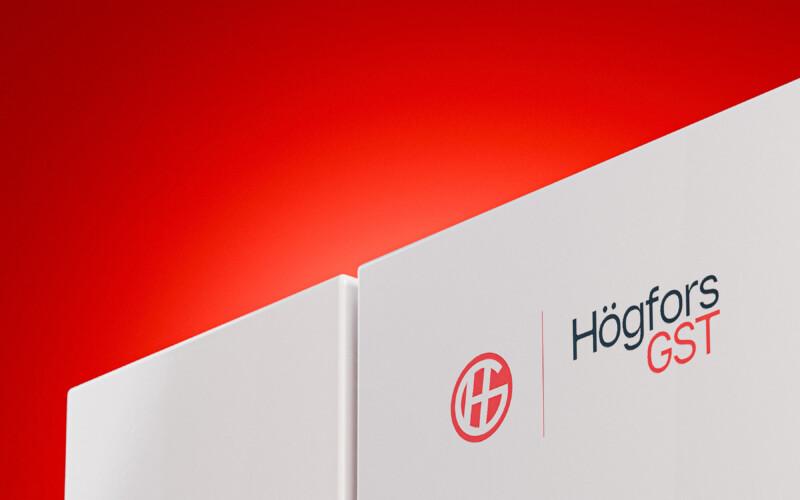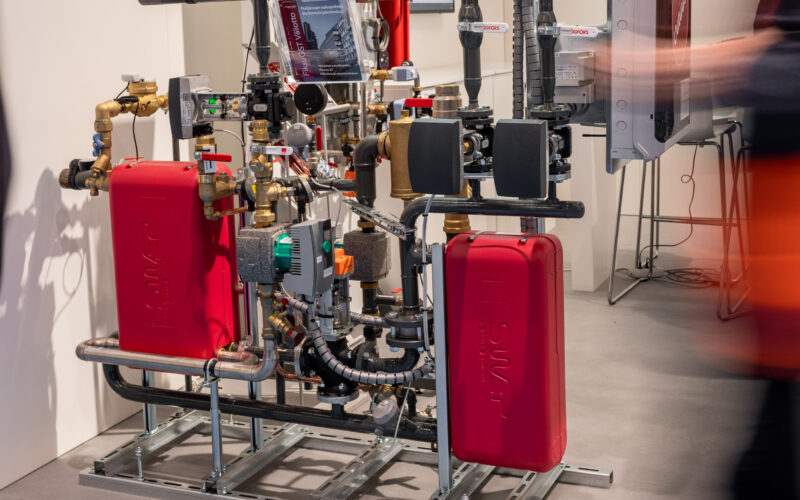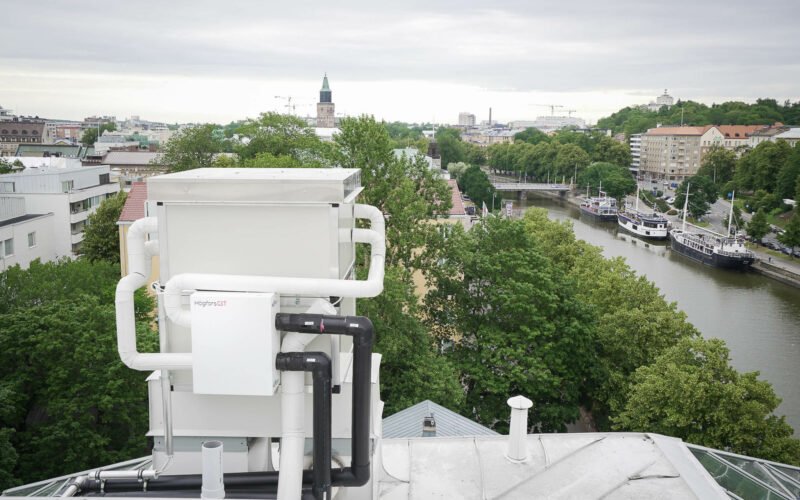Have you ever wondered how homes will be heated in the future when fossil fuels have come to an end? In this blog, we present four future options for fossil fuels.
1. Geoenergy – from the depths of the Earth
Geothermal heat is a familiar form of heating for many detached houses, but geothermal energy can also be used in the production of district heating. The use of heat stored deep in the earth’s crust has recently been piloted in a number of different projects.
Utilization of geothermal energy in district heating networks is still in its early stages, but geothermal energy is one potential source of carbon-neutral energy and options for fossil fuels in the future. The costs and risks of holes drilled to a depth of several kilometers can be considered as challenges for geothermal energy.
2. Solar and wind energy
How can solar and wind energy be used to heat houses? The answer lies in heat pumps: emission-free solar or wind electricity can be used, for example, to run a heat pump plant and thus produce clean heat. We talked more about heat pump plants in our previous blog.
Of course, the thermal energy collected from the sun can also be used for heating. Although sun usually shines most when the demand for heat is lower, the thermal energy obtained from solar collectors can be used to heat the hot water needed all year round. For example, a new solar panel field in Kuopio, Finland generates both electricity and heat.
3. Power-to-X – synthetic energy production
The basic idea of quite futuristic-sounding power-to-X (or P2X) is to convert electricity into another form of energy. Examples of P2X applications are the production of synthetic fuels such as methane or methanol.
– P2X’s idea is to use either surplus electricity from power plants or zero-emission solar and wind electricity in the production of fossil fuel substitutes. This improves the flexibility of energy consumption: from time to time, more electricity is produced than is consumed. In these situations, the excess electricity can be converted by means of the P2X process into gas, for example. Gas can be stored or used, for example, as a transport fuel. P2X processes often generate a lot of waste heat that can be recovered and utilized as district heat, HögforsGST’s Managing Director Antti Hartman says.
Power-to-X solutions are still a fairly new technology, so their large-scale deployment awaits somewhere in the future. However, P2X is one of the ideas worth looking into when searching for solutions to produce carbon-neutral energy.
4. Small nuclear power plants – the core of district heating production in 2050?
The production of district heating by nuclear power has come under discussion in recent years as coal’s role in energy production is being reduced. Currently, the greatest interest is in small reactors, which are currently being developed by the Finnish LUT University, among others. As the name implies, a small reactor is a small-scale heat-generating nuclear power plant that, according to LUT, could be located even in the middle of a residential area.
The advantages of small power plants are their simpler structure and reproducibility, which enables lower construction and maintenance costs. Although the risks of modern small reactors are lower than for large nuclear power plants, attitudes towards nuclear power continue to divide opinions.
– Nuclear power has a really great potential to be a significant heat source and options for fossil fuels in the future. However, there are still some technical and political challenges associated with nuclear power, so at least in the next few years, small reactors probably won’t be seen as a part of district heating production, Hartman says.
In addition to technical and political challenges, public attitudes towards nuclear power may prove problematic for new small reactors. Attitudes towards nuclear power are mixed, as according to a survey commissioned by the Energy Industry, about half of Finns have a positive attitude towards small reactors. On the other hand, the same study shows that small reactors are a technology that is still unknown to a large part of the population.
Renewable energy is good for the economy and the environment
A special feature of the new energy sources is that they are largely domestic. According to Hartman, this is an important issue for both the national economy and security of supply.
– The billions currently spent on coal and other fossil fuels are going abroad. When fossil fuels are replaced by domestic renewable alternatives, the money will remain to boost the domestic economy. Security of supply will improve while we are able to reduce our dependence on imported fuels.
According to Antti Hartman, the increase in new energy sources in the production of district heating and energy in general is only a positive thing, as renewable and non-combustion energy sources can replace traditional fuels. At the same time, CO2 and particle emissions are reduced.
– Increasing the share of renewables is also increasing energy efficiency, since less primary energy, such as wood used as fuel, is needed. We need to take action in lowering the district heating network temperatures so that new energy sources can be used more efficiently, Hartman concludes.

Antti Hartman
Strategy & Business Development Director
+358 400 738 325
antti.hartman@hogforsgst.com






